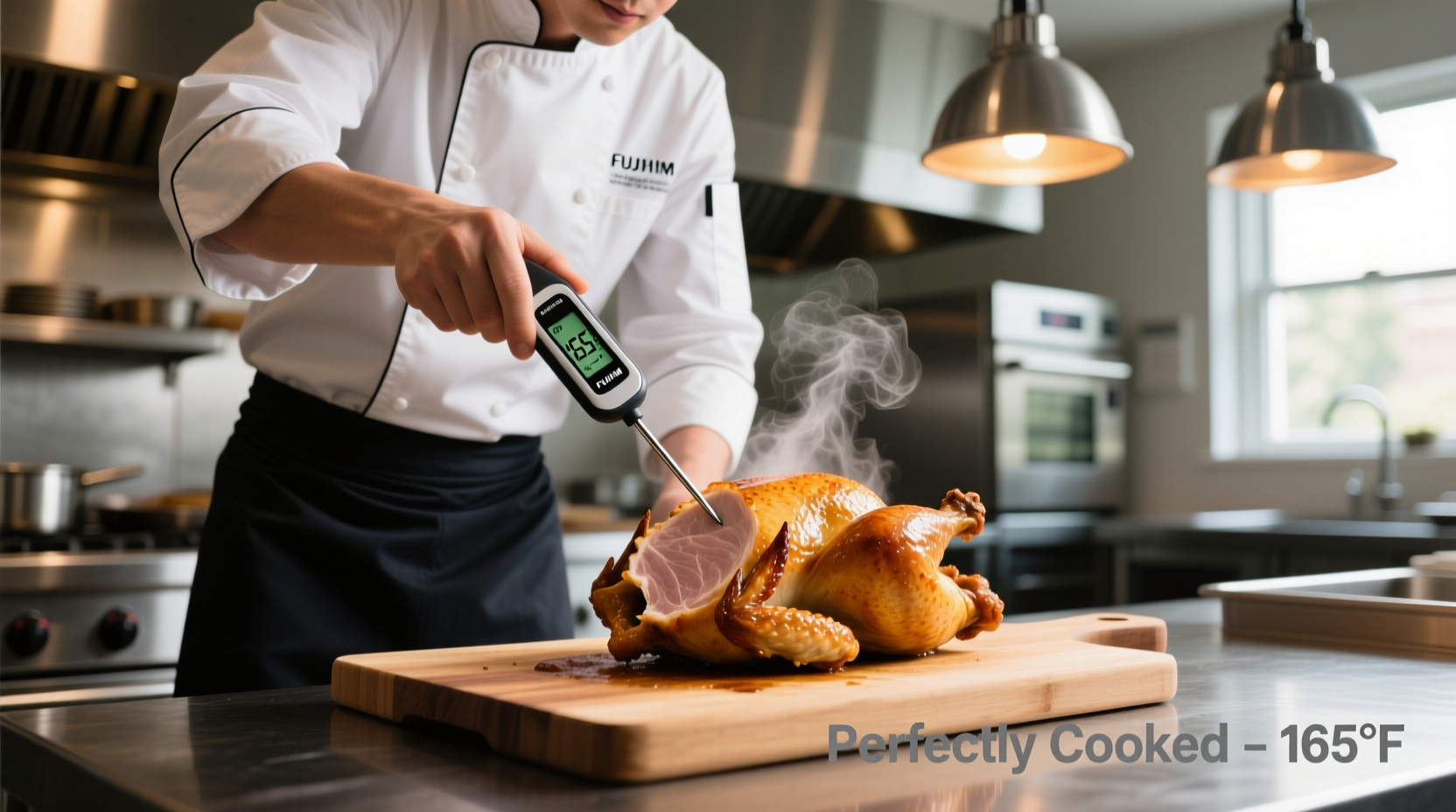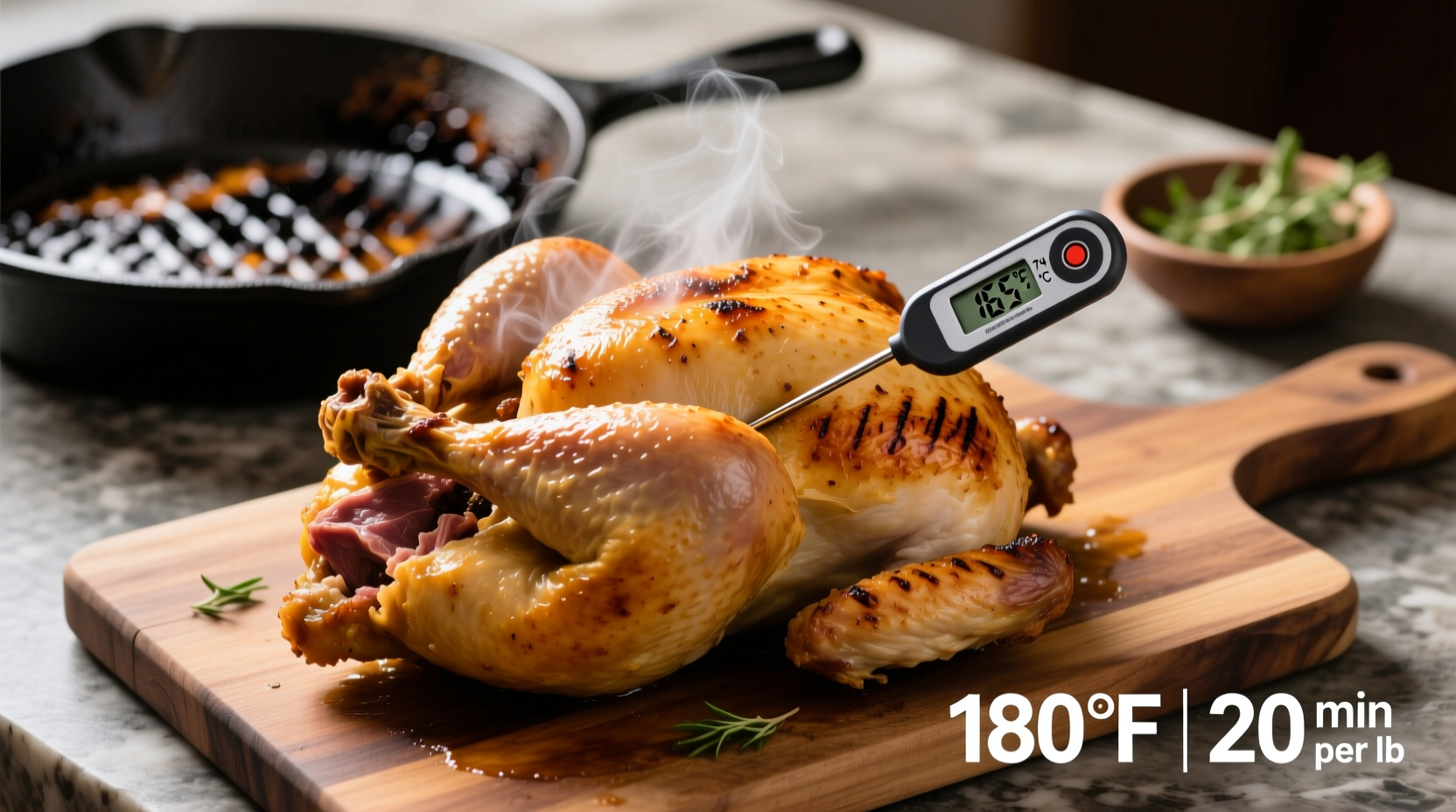Getting chicken cooking times right separates a juicy, flavorful meal from a dry disappointment or worse—foodborne illness. Whether you're roasting a whole bird for Sunday dinner or searing breasts for a quick weeknight meal, understanding the variables that impact cooking time ensures perfect results every time. This guide delivers precise timing based on USDA food safety standards, professional chef techniques, and real-world testing across multiple cooking methods.
Why Chicken Cooking Time Isn't One-Size-Fits-All
Chicken's cooking time varies significantly based on three critical factors: the cut's thickness, cooking method, and starting temperature. A bone-in thigh requires more time than a boneless breast due to density differences, while a whole chicken needs proper calculation based on weight. The USDA's Food Safety and Inspection Service confirms that 165°F (74°C) internal temperature is the only reliable indicator of doneness, not time alone. This standard replaced older recommendations of 180°F for whole chickens, reflecting updated food safety research that prevents overcooking while maintaining safety.
Cooking Time Reference Guide by Method
Use these time ranges as starting points, but always verify with a meat thermometer. Times assume preheated ovens at specified temperatures and chicken at refrigerator temperature (40°F or below).
| Chicken Cut | Cooking Method | Temperature | Time Range | Internal Temp Check Point |
|---|---|---|---|---|
| Whole chicken (3-5 lbs) | Roasting | 375°F | 1.5-2 hours | Thickest part of thigh (not touching bone) |
| Boneless breasts (6-8 oz) | Baking | 375°F | 20-30 minutes | Center of thickest breast |
| Bone-in thighs (drumsticks) | Baking | 400°F | 35-45 minutes | Meat near bone |
| Chicken pieces | Grilling | Medium-high heat | 6-8 minutes per side | Thickest section |
| Whole chicken | Slow cooker | High setting | 4-5 hours | Multiple points |
The Critical Role of Temperature Monitoring
Time estimates provide a framework, but temperature determines actual doneness. The USDA's Chicken from Farm to Table guide emphasizes that visual cues like color change or juice clarity are unreliable indicators. Insert an instant-read thermometer into the thickest part of the meat, avoiding bones. For whole birds, check both breast and thigh areas as they cook at different rates. Remember that chicken continues cooking after removal from heat (carryover cooking)—pull it 5°F below target temperature.

Common Time-Affecting Factors You Must Consider
Several variables alter standard cooking times, requiring adjustments:
- Starting temperature: Room-temperature chicken cooks 15-20% faster than refrigerated. Never leave chicken out more than 2 hours for safety.
- Oven accuracy: Use an independent oven thermometer—many home ovens vary by 25°F or more from displayed temperature.
- Pan crowding: Overcrowded pans lower cooking surface temperature, extending time by up to 30%.
- Meat thickness: Uneven pieces require strategic placement—thicker sections toward heat source.
Troubleshooting Cooking Time Issues
When chicken isn't cooking as expected:
If Cooking Too Slowly
Increase oven temperature by 25°F but monitor closely. For grilling, move pieces to hotter zones. Never cut chicken to check doneness—that releases juices and dries the meat.
If Cooking Too Quickly
Reduce heat and create a barrier: tent foil loosely over chicken or move to a cooler oven area. For breasts prone to drying, place a slice of lemon or herb butter on top to add moisture during final cooking stages.
Rescuing Slightly Undercooked Chicken
If you've removed chicken slightly early (155-160°F), return it to gentle heat for 3-5 minutes. The FDA's chilling guidelines confirm that brief additional cooking won't compromise safety when done properly. Never return undercooked chicken to marinade or raw meat surfaces.
Why Modern Cooking Times Differ From Old Recommendations
Historical cooking advice often recommended higher temperatures (180°F for whole chickens) due to limited food safety knowledge. The USDA updated standards in 2011 based on research showing pathogens die instantly at 165°F, allowing juicier results without safety compromise. This evolution reflects improved understanding of pathogen behavior—Salmonella is destroyed in 10 seconds at 160°F according to Cornell University's Food Science Department research.
Professional Tips for Perfectly Cooked Chicken Every Time
Season chicken at least 30 minutes before cooking to enhance moisture retention. For roasting, truss the bird to promote even cooking. When pan-searing, start skin-side down to render fat properly. Always rest cooked chicken 5-10 minutes before slicing—this allows juices to redistribute, preventing dryness. These techniques, validated by the American Culinary Federation's standards, transform standard cooking times into consistently excellent results.
Frequently Asked Questions
How long does it take to cook a 4-pound chicken at 375°F?
A 4-pound chicken requires approximately 1 hour and 20 minutes at 375°F (20 minutes per pound). Always verify with a thermometer—the thickest part of the thigh should reach 165°F (74°C). Insert the thermometer away from bones for accurate reading.
Can I cook chicken at 400°F instead of 375°F?
Yes, higher temperatures (400-425°F) reduce cooking time by 15-20% while creating better browning. Boneless breasts need 18-25 minutes, while bone-in pieces require 30-40 minutes. Monitor closely to prevent overcooking, as the higher heat accelerates the cooking process significantly.
How do I know when chicken is done without a thermometer?
While a thermometer is essential for safety, visual indicators include clear juices when pierced, meat pulling easily from bones, and opaque white color throughout. However, the USDA strongly recommends using a thermometer as visual cues alone can't guarantee safety from pathogens like Salmonella.
Does cooking time differ for organic or free-range chicken?
No significant difference exists in cooking times between conventional, organic, or free-range chicken. The variables that affect cooking time—cut, thickness, starting temperature, and cooking method—remain the same regardless of production method. Always verify doneness by internal temperature, not time alone.











 浙公网安备
33010002000092号
浙公网安备
33010002000092号 浙B2-20120091-4
浙B2-20120091-4